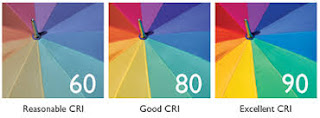Factors Influencing the Lighting Design
Lighting is an Art as well as a Science. There is no ideal or optimum solution to a particular lighting problem. The design process should be seen as consisting of two quite distinct phases. Phase one begins with the client, and involves studying the various local factors that will influence the design. Phase two is the design process proper, and it is here that the first of many design decisions are made.
Factors Influencing the Design
It is very important that the lighting designer establishes a very good working relationship with the client and with all the others engaged in the project ( such as architects, interior designers, air conditioning engineers) at the earliest possible stage in its development. It will then often be possible to influence basic design conditions concerning the space to be lighted. Later on it might well be too late to make those changes that would have simplified or improved the final lighting design.
The most important factors dictated by the client that will influence the lighting design are:
Factors Influencing the Design
It is very important that the lighting designer establishes a very good working relationship with the client and with all the others engaged in the project ( such as architects, interior designers, air conditioning engineers) at the earliest possible stage in its development. It will then often be possible to influence basic design conditions concerning the space to be lighted. Later on it might well be too late to make those changes that would have simplified or improved the final lighting design.
The most important factors dictated by the client that will influence the lighting design are:
- Function of the space
- Dimensions and details of the space
- Furnishing and layout
- Style (Aesthetics)
- Decor
- Lighting budget
Functions of the Space
The starting point for any lighting design is the function assigned to the space in question.This may be a leisure area, such as a hotel lounge, where the emphasis is placed almost entirely on the visual comfort of the surroundings. It may, on the other hand , be working area, such as an office, in which case the nature of the seeing task has to be considered.
It is also important that function and space be seen in combination. For example, the sort of lighting needed to facilitate reading and writing in an office will be different to that suitable for performing the same tasks in a factory or in a living room at home.
Dimensions and Details of the Space
What is needed is a scale drawing showing the floor plan of the space to be lighted, with posiitons and dimensions of windows and doors, and a cross sectional view giving the height of the ceiling and the space available above this. Also valuable are as many details as possible of the construction of the walls and ceiling. The routing of any air conditioning ducting should be clearly indicated.
Furnishing and Layout
In order to be able to specify the type of lighting system best suited to a given space, the type of luminaires to be employed and where, and how they should be aimed, it is necessary to know something about how the space will be furnished and laid out. This applies to both working and non-working areas. In the former case it is particularly important that the positions of work stations ( desk VDUs, drafting tables) be accirately specified. If such items are likely to be re- arranged from time to time, this fact should also be noted.
Style (Aesthetics)
The choice of a particular lighting solution, involving as it does the choice of lamp and luminaire type ( design , colour, screening, etc) is in part determined by the general style and architecture of the space concerned, and the image that the client wishes to create. For example, in the more decorative public areas of, say , a hotel , the lighting will be of a more decorative nature than that appropriate to the service areas, where the emphasis will be more on efficiency and energy saving.
Decor
In order to arrive at the number of luminaires needed to achieve a certain lighting level (horizontal and vertical illuminance values) and luminance ratio, it will usually be necessary to make quite detailed lighting calculations. This calls for information concerning the decor employed in the interior, as this will affect reflectances of ceiling, walls, floor and furnishing materials.
Lighting Budget
The lighting budget that the client has in mind will also play a role in determining exactly how far the lighting designer can go in his quest for the best possible solution to the lighting. Details on this point should therefore be requested , along with all the other information mentioned above, before embarking on the design process proper.
Courtesy Philips Lighting Manual









Comments
Post a Comment